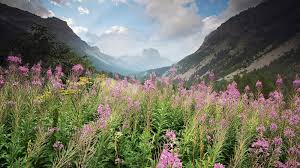Biology – Our Environment – Notes For W.B.C.S Examination.
- Environment is a natural world in which all living beings and non-living things exist.Continue Reading Biology – Our Environment – Notes For W.B.C.S Examination.
- The substances, which are broken down by the biological processes, are known as biodegradable.
- The substances, which are NOT broken down by the biological processes, are known as non-biodegradable.
Ecosystem
- An ecosystem comprises of biotic components (all living organisms) and abiotic components (all physical factors, such as temperature, rainfall, wind, soil and minerals) of a given area. E.g. Lake ecosystem, Forest ecosystem, Marine ecosystem, etc.
- In a given geographic region, all the living organisms interact with each other and their growth, reproduction, and other activities are largely dependent on the abiotic components of the ecosystem.
- In an ecosystem, all green plants and certain blue-green algae can produce their food (themselves) by the process of photosynthesis; hence, they are known as the producers.
- The organisms, depending on the producers either directly or indirectly, can be termed as herbivores, carnivores, omnivores and parasites.
- All those animals that eat plants are known as herbivores (also known as primary consumers). E.g. cow, goat, rabbit, deer, etc.
- All those animals that eat other animals are known as carnivores (also known as secondary consumers) E.g. tiger, lion, snake, etc.
- All those animals that eat both plants (and its products) and other animals are known as omnivores.
- The larger size of carnivores and omnivores animals are known as tertiary consumers.
- The microorganisms, such as bacteria and fungi, break-down the dead remains and waste products of organisms and hence they are known as decomposers.
- The pyramid given above illustrates that the population of producers is maximum and as we go up, the population of subsequent consumers keeps decreasing.
Food Chain
- A series of animals (of different biotic level) feeding one another forms a food chain.
- Each level of the food chain forms a trophic level (see the image given below).
- In the given image, (a) illustrates food chain in nature; (b) illustrates food chain in a grassland region; and (c) illustrates food chain of pond ecosystem.
- The autotrophs (i.e. producers) exist at the first trophic level.
- The herbivores (i.e. the primary consumers) come at the second trophic level.
- The small carnivores (i.e. the secondary consumers) comes at the third trophic level and larger carnivores or the tertiary consumers comes at the fourth trophic level.
Transmission of Energy
- While transmission of energy from one trophic level to second, large amount of energy gets lost, which cannot be used again.
- The green plants (i.e. producers) in a terrestrial ecosystem capture about 1% of the energy of sunlight and convert it into food energy.
- Secondly, when primary consumers eat green plants, about 10% of the food eaten is transmitted into its own body and made available for the next level of consumers.
Food Web
- When the (food) relationship is shown in a series of branching lines instead of a straight line, it is known as a food web .
Our own publications are available at our webstore (click here).
For Guidance of WBCS (Exe.) Etc. Preliminary , Main Exam and Interview, Study Mat, Mock Test, Guided by WBCS Gr A Officers , Online and Classroom, Call 9674493673, or mail us at – mailus@wbcsmadeeasy.in
Visit our you tube channel WBCSMadeEasy™ You tube Channel
Please subscribe here to get all future updates on this post/page/category/website



 Toll Free 1800 572 9282
Toll Free 1800 572 9282  mailus@wbcsmadeeasy.in
mailus@wbcsmadeeasy.in


















































































































